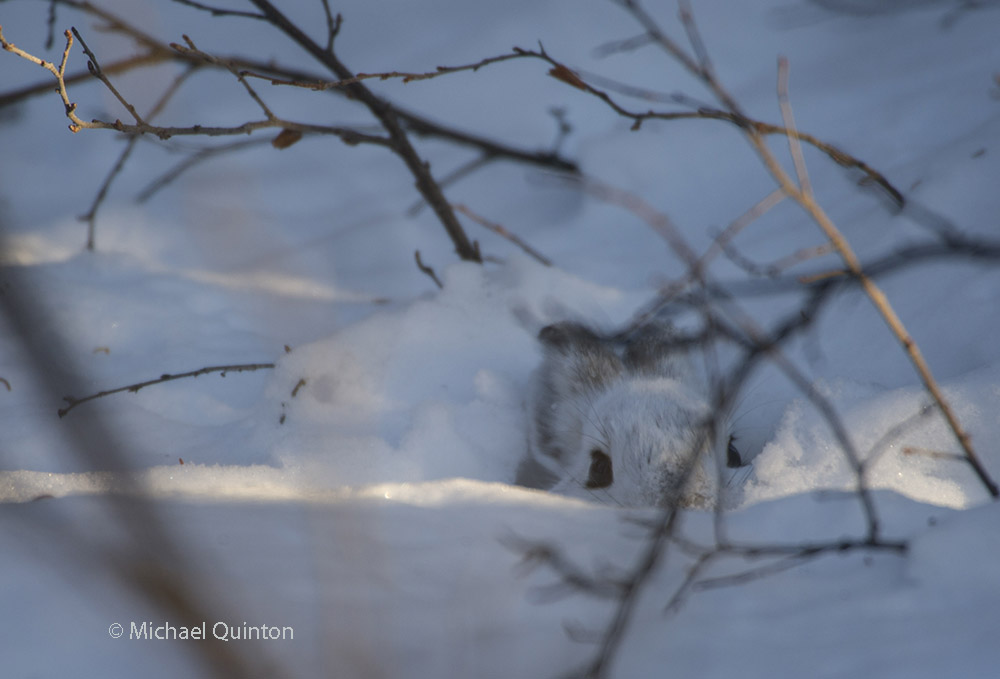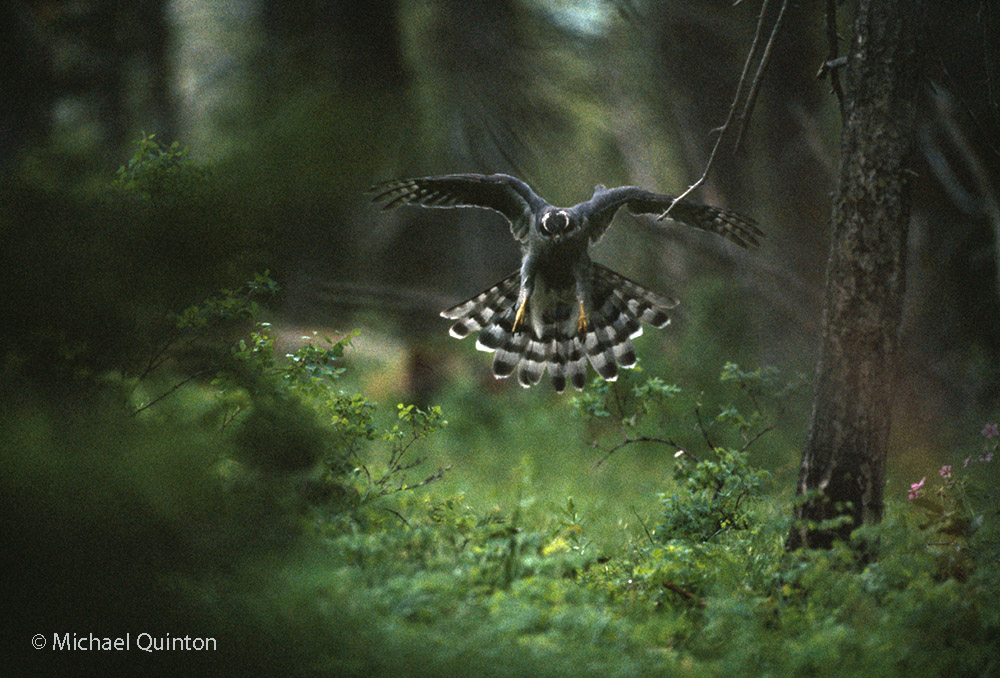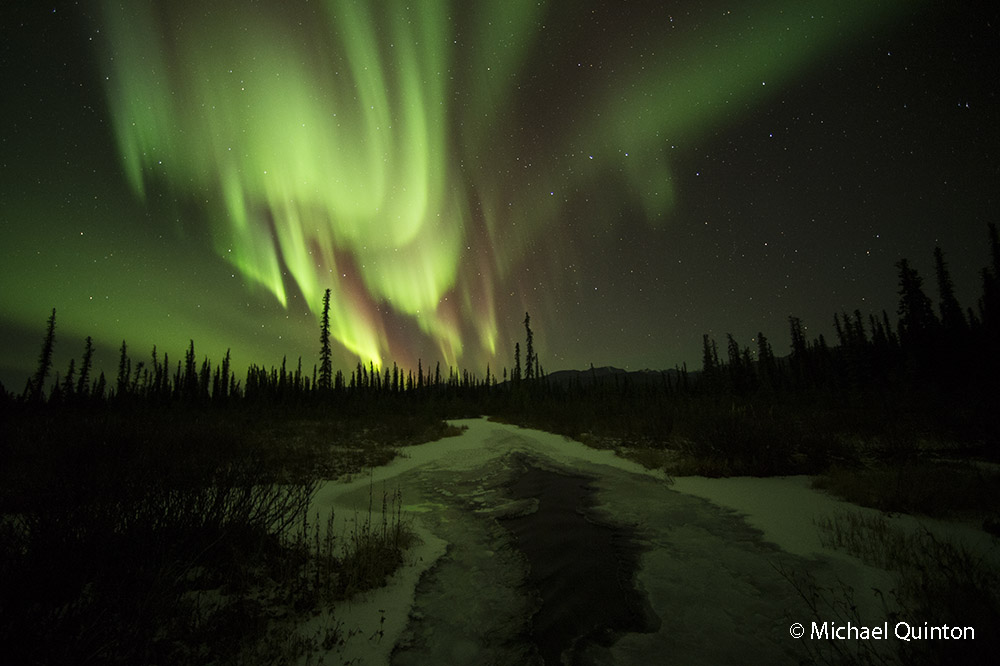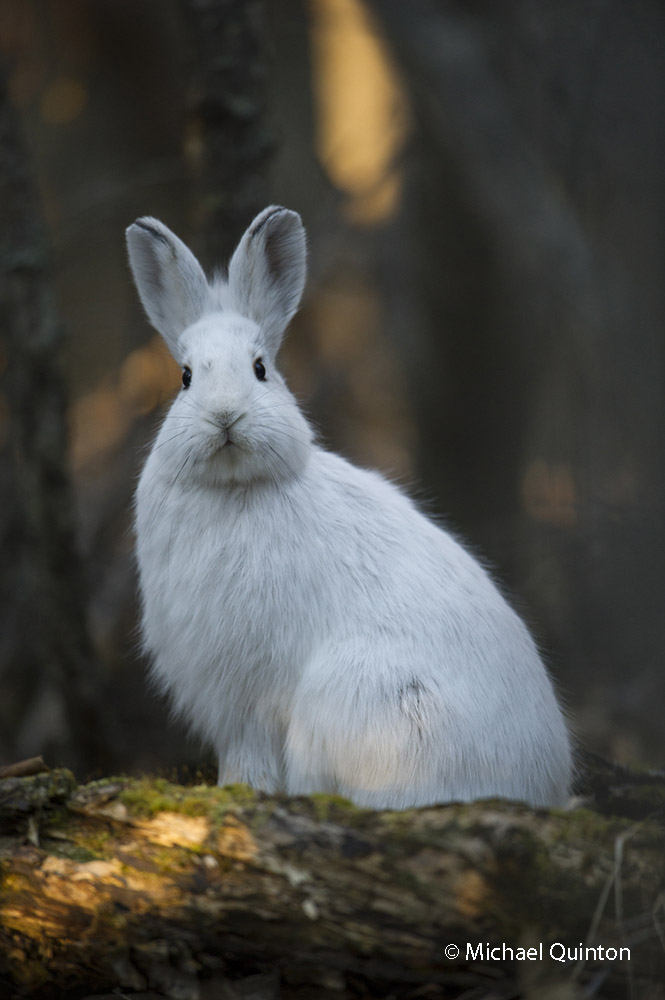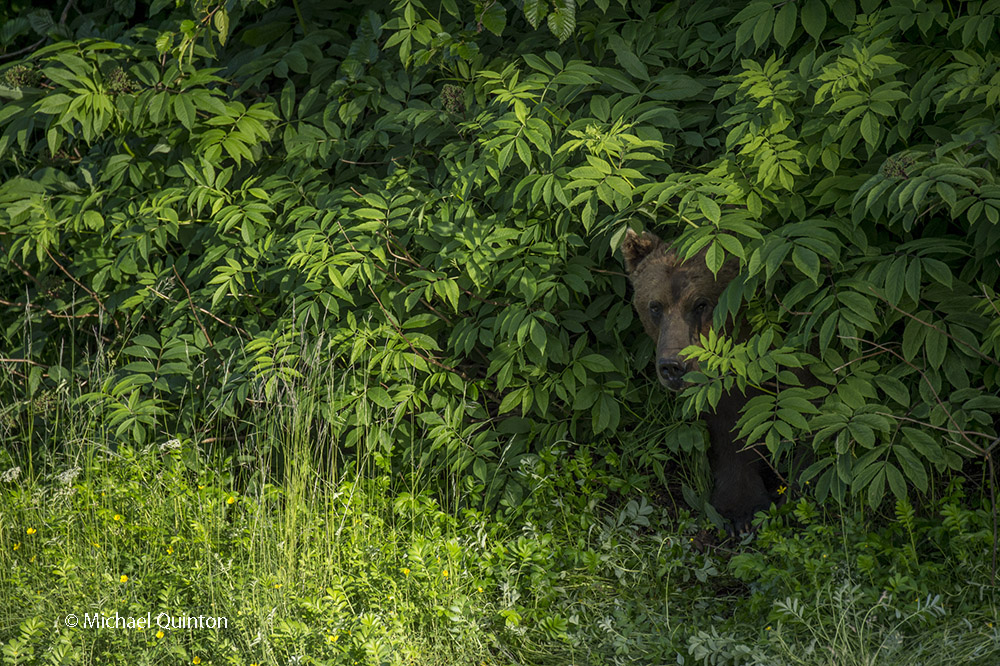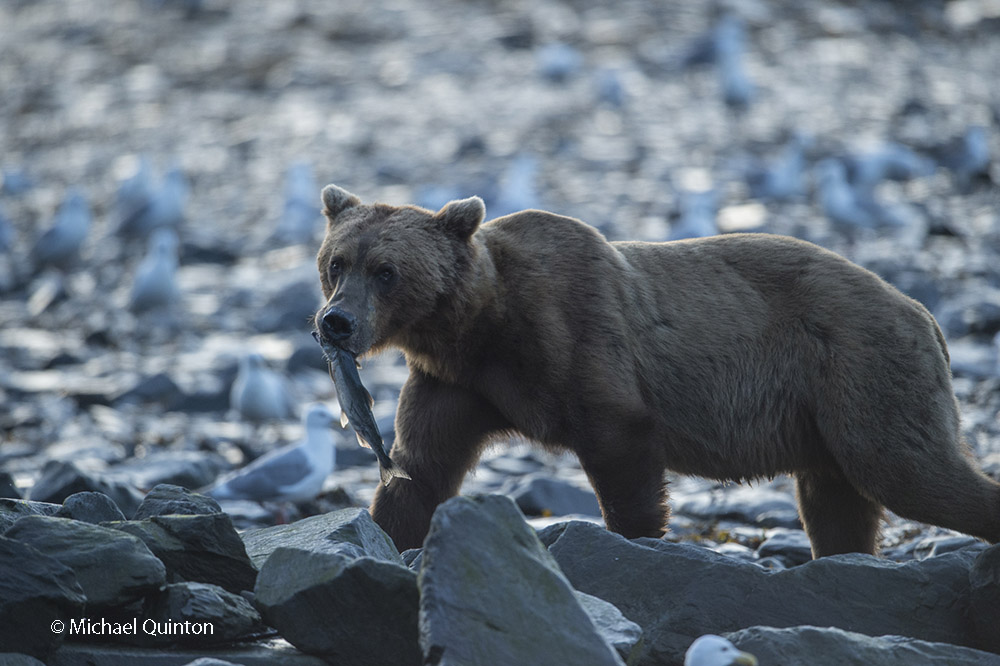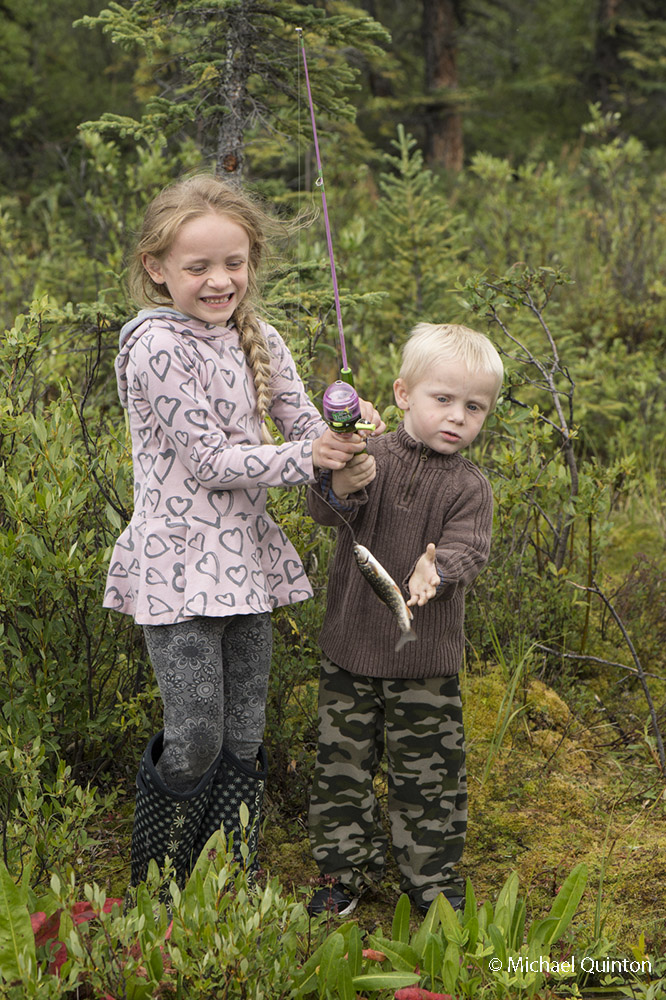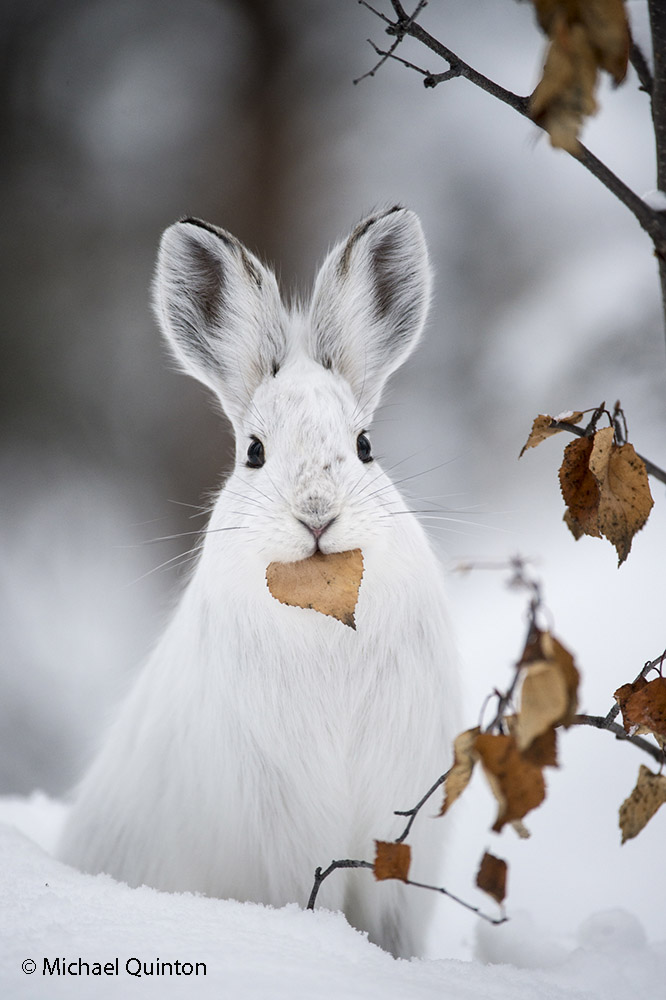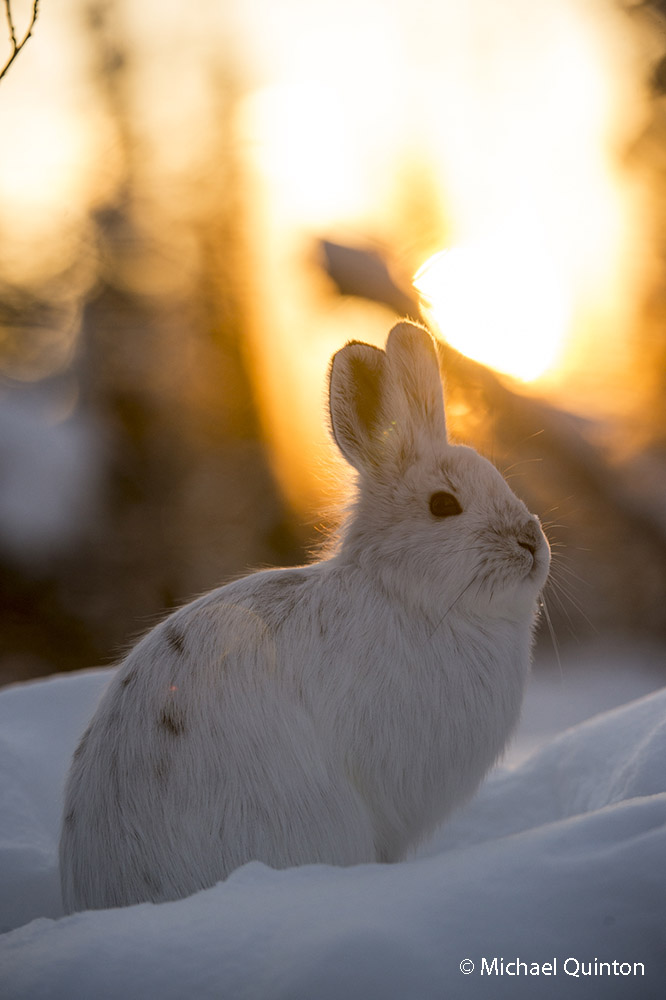 A marten pokes up through the snow to look around.
A marten pokes up through the snow to look around.
 The shy and careful weasel, not liking to be exposed, has pulled its prey, a snowshoe hare, into deep snow.
The shy and careful weasel, not liking to be exposed, has pulled its prey, a snowshoe hare, into deep snow.
 Though I have gone several years between marten sightings in the past, i typically have one or two sightings a year. But, just last week we had a marten hanging out at our place for several days. The forest around our home was laced with its familiar tracks and all the trails seemed to begin at a big wood pile like spokes of a wheel. We saw it several times daily and I was able to take hundreds of photographs of the usually elusive predator. From our front row seat at the window, we watched as the marten climbed up a spruce to a red squirrel nest and stole goodies the squirrel had stashed there. And, once I watched as it chased a snowshoe hare through the black spruce. It managed an amazing burst of speed and very nearly caught up to the hare. But when pressed the hare showed he is even quicker So, I was a bit surprised to look out the window and see the marten tugging and pulling at a hare it had caught during the night. It pulled the hare into the deep snow where it could butcher its prey concealed from the prying eyes of other predator and scavengers. First the marten gnawed off the hares head and cached it in the wood pile. The next day it cached the hares front legs. Cindy and I watched as the solitary marten entertained itself by running an obstacle course around and through the wood pile then roll on its back in the snow.
Though I have gone several years between marten sightings in the past, i typically have one or two sightings a year. But, just last week we had a marten hanging out at our place for several days. The forest around our home was laced with its familiar tracks and all the trails seemed to begin at a big wood pile like spokes of a wheel. We saw it several times daily and I was able to take hundreds of photographs of the usually elusive predator. From our front row seat at the window, we watched as the marten climbed up a spruce to a red squirrel nest and stole goodies the squirrel had stashed there. And, once I watched as it chased a snowshoe hare through the black spruce. It managed an amazing burst of speed and very nearly caught up to the hare. But when pressed the hare showed he is even quicker So, I was a bit surprised to look out the window and see the marten tugging and pulling at a hare it had caught during the night. It pulled the hare into the deep snow where it could butcher its prey concealed from the prying eyes of other predator and scavengers. First the marten gnawed off the hares head and cached it in the wood pile. The next day it cached the hares front legs. Cindy and I watched as the solitary marten entertained itself by running an obstacle course around and through the wood pile then roll on its back in the snow.
 Though half the snowshoe hare was still left I spent the next two days watching and waiting for it to reappear. But just like it appeared, it disappeared. A pair of gray jays began to work the hare carcass hauling if away piece by piece, stashing it among the black spruce boughs. A pair of ravens wanted their share but only stared. For ravens, of course, are very cautious, even fearing their own food. But ravens are keen spies and watched carefully where the gray jays cached their loads. A hawk owl made a lightning quick chase and near miss of one of the gray jays. And later, I saw it swoop quickly again in the vicinity of the snowshoe hare carcass. Thinking it might have caught the gray jay I approached with my camera and telephoto lens. But the hawk owl had not caught the jay, instead it stood on the snowshoe hare carcass tugging. From the thick spruce nearby I heard a second hawk owl calling. It was the begging call of a female. After several minutes of biting and pulling the hawk owl, presumably a male, managed to tear off a chunk of the hare. It flew to a spruce and was soon joined by the female who took the offering.
Though half the snowshoe hare was still left I spent the next two days watching and waiting for it to reappear. But just like it appeared, it disappeared. A pair of gray jays began to work the hare carcass hauling if away piece by piece, stashing it among the black spruce boughs. A pair of ravens wanted their share but only stared. For ravens, of course, are very cautious, even fearing their own food. But ravens are keen spies and watched carefully where the gray jays cached their loads. A hawk owl made a lightning quick chase and near miss of one of the gray jays. And later, I saw it swoop quickly again in the vicinity of the snowshoe hare carcass. Thinking it might have caught the gray jay I approached with my camera and telephoto lens. But the hawk owl had not caught the jay, instead it stood on the snowshoe hare carcass tugging. From the thick spruce nearby I heard a second hawk owl calling. It was the begging call of a female. After several minutes of biting and pulling the hawk owl, presumably a male, managed to tear off a chunk of the hare. It flew to a spruce and was soon joined by the female who took the offering.
 Northern hawk owl continues the butchering process of the marten’s kill. Though It is true that a predator may not use all of its prey, nothing is wasted.
Northern hawk owl continues the butchering process of the marten’s kill. Though It is true that a predator may not use all of its prey, nothing is wasted.



